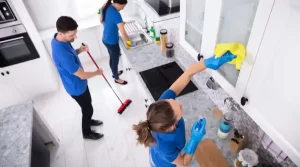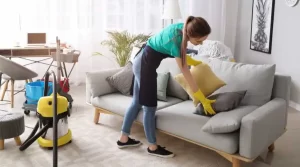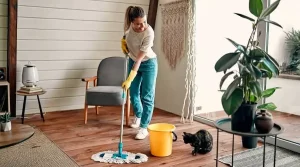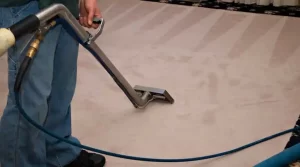Janitors and cleaners are necessary in any educational setting. A clean and safe school environment has a significant impact on the effectiveness and achievement of pupils.
You might be interested in learning how various educational settings fare in terms of cleanliness. Which group of students—the older or younger ones—should you tidy up after? This essay will go over the importance of keeping a school pristine as well as the variations in cleaning practices between high schools and elementary schools.
Unpleasant and dirty settings can make learning more challenging at any level of education, whether it is preschool, high school, or university. Children may suffer at a filthy school for a variety of reasons, including:
Perfect health in schools, virus outbreaks are a frequent issue. It is essential to maintain bathrooms, surfaces, and spaces where students prepare or eat food clean due to the prevalence of these infections. Given how frequently schools use communal places, this is essential.
Attendance will undoubtedly be impacted if a school is dealing with illness outbreaks on a regular basis. A student who is constantly homesick will have difficulty in class.
Poor working conditions will cause students to pay less attention and be less productive. If children are to completely benefit from their time spent in school, their learning environment must be kept clean and maintained.
Cleaning Up Kindergartens
Early childcare settings with a lot of activity, fun, and creativity include kindergartens and preschools. The days are filled with gardening, water play, sandbox time, arts and crafts, and other creative learning pursuits. This shows that it can be difficult to keep kindergartens structured and that they can easily become disordered.
Kindergartens also provide a huge selection of shared toys and cooking utensils. To reduce the possibility of germs migrating from one place to another, sanitation is essential.
It’s important to remember that young children are more prone to illnesses and infections. Compared to adults, they have less developed immune systems. There can be younger siblings or babies at home who have not yet had all of their immunizations, despite the fact that the majority of kindergarten pupils will be inoculated. The safety of other children at home is also affected by maintaining a healthy learning environment.
Therefore, cleaning kindergartens will likely focus on:
- All surfaces, including chairs and tables, should be spotless, especially in the kitchen and bathroom.
- Young children should be protected from dust, pollen, and other airborne allergens as much as possible since they are more susceptible to allergies and asthma.
- Glass windows and doors. There are numerous grimy small handprints all over kindergarten. Regular glass cleaning is necessary to keep everything looking lovely and new.
- Vacuuming and mopping. Young toddlers or babies spend a lot of time playing on the floors in early childcare facilities, which are easily dirty. In order to maintain its fine condition, it must occasionally be cleaned.
Maintenance of HIgh School Buildings
Cleaning up after older kids may be extremely different. Anyone who even has a passing familiarity with a high school knows that particular areas may very easily become unpleasant and filthy.
The first thing that comes to mind is the bathrooms. High school restrooms that are left unattended can get filthy with used paper towels that haven’t been thrown out, water that has spilled on the floors and sinks, and hand soap or sanitizer that has been smeared over the sinks. Here are some suggestions we have for modernizing school bathrooms.
High schools also have less direct supervision than kindergartens. The kindergarten staff will look out for the children at all times and clean up after them. It is more likely that messes in the toilets or homerooms will be left for the cleaners in high school because teachers don’t have the same responsibilities as students. Additionally, normal trash, leftover food, and rubbish that has been dumped there are more likely to be present in a high school.
Consequently, the bulk of high school cleaning will consist of:
- Floors should be mopped, and bathrooms should be cleaned and sanitized. The classrooms and homerooms should be cleared of trash and food leftovers, and the tables in the canteens or other eating areas should be cleaned.
- Depending on the kind of instruction the school offers, some areas could be filthy and require specific cleaning. This can consist of a kitchen, a woodworking shop, or a textile technology area.
Whether these are benefits or drawbacks depends on what you do and don’t mind doing. Cleaning kindergartens can be a wonderful fit for you if accuracy is your thing because they require a higher level of care. Nevertheless, if you are better at general cleaning (and aren’t afraid of a little bit more mess), high school cleaning might be more your style.







